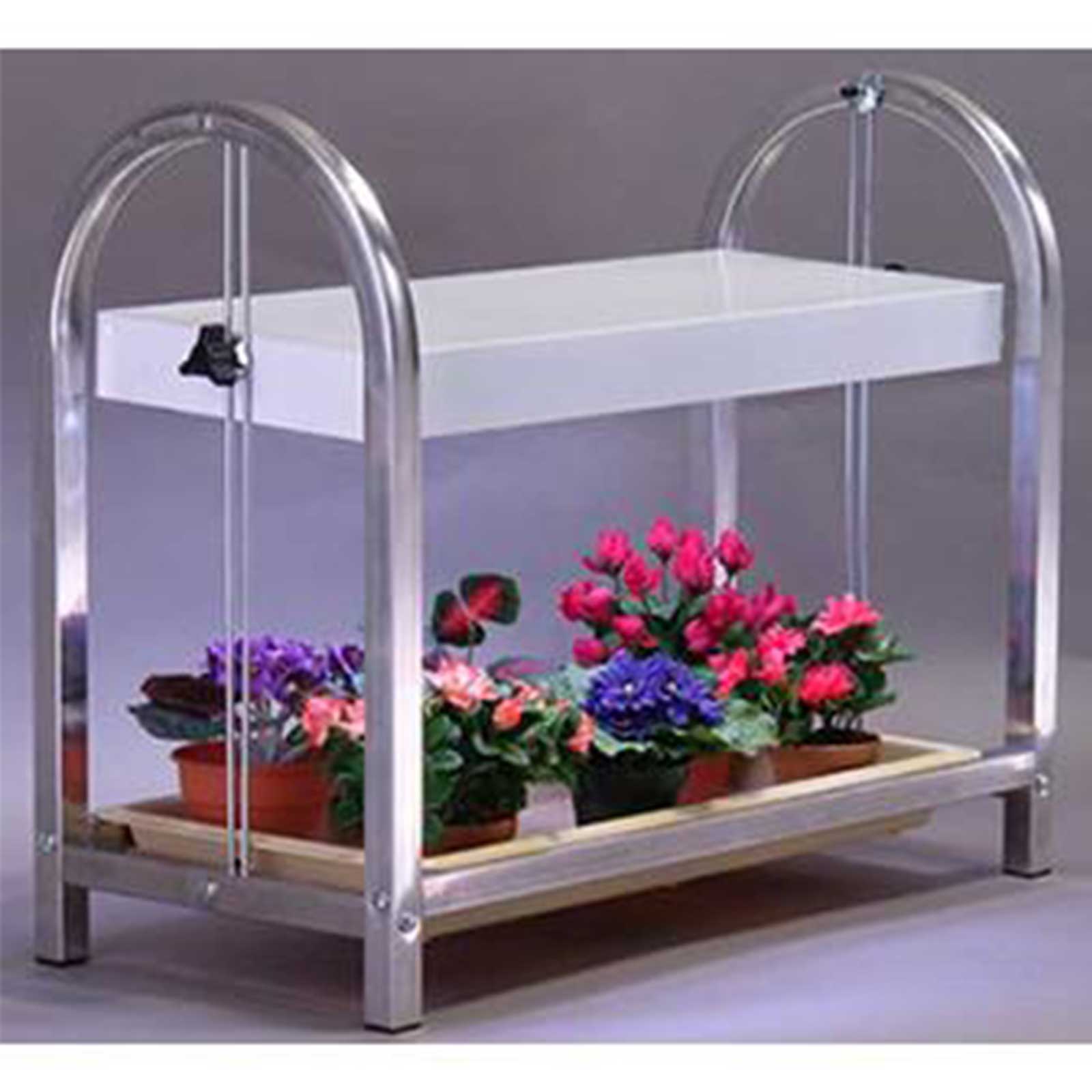Basil is a delightful herb renowned for its fragrant, clove-like aroma and culinary versatility. You don’t need to rely on store-bought bunches or dried versions for your recipes; growing basil indoors can be a fun and fulfilling adventure.
This guide will teach the essentials of proper positioning and environment, watering, soil and fertilizer requirements, as well as pest management and pruning strategies.
Proper Positioning and Environment for Basil
Proper Positioning for Indoor Basil Plants
Find a spot in your home where the basil plants will receive approximately six hours of sunlight daily. If you don’t have a spot with sufficient natural light, you can use grow lights instead.

Help your plants grow indoors with the Bell + Howell Bionic Grow, As Seen on TV. This L… [More]

This plant growing rack will fit one tray of wheatgrass, barleygrass or microgreens at … [More]
Creating the Right Environment for Indoor Basil Plants
- Maintain a consistent temperature for your indoor basil plants. The ideal growing temperature for basil is between 50°F (10°C) and 85°F (29°C). Keep the plants out of drafts to avoid sudden changes in temperature which could stress the plants.
- Ensure a high humidity level for the basil plants. Basil thrives in humid conditions. Mist the plants lightly with water every few days, or place a tray filled with water near your plants to increase humidity.
- Monitor the humidity levels in your home with a hygrometer to ensure they are high enough for your basil plants. If the air in your home is too dry, consider using a humidifier to increase the moisture level in the air.
Watering, Soil, and Fertilizer Requirements
Tips for Watering Basil Plants Indoors
- Water the basil plant at the base, avoiding getting the leaves wet.
- Make sure to thoroughly moisten the soil and continue watering until you see water come out into the saucer or the drainage tray under the pot.
- Wait for all the excess water to drain out. Never let the pot sit in standing water, as this can lead to root rot.
- Allow the soil to dry slightly on top before watering again.
Tips for Preparing Soil for Basil Plants
- Ensure your pot has sufficient drainage holes to prevent water logging.
- Use a soil mixture that drains well. A good combination is equal parts compost, peat moss, and perlite.
- Fill the pot with the soil mixture, leaving a couple of inches at the top.
- Plant the basil in the center of the pot and cover the roots with the soil mixture.
Fertilizing Indoor Basil Plants
Materials: mild organic fertilizer
Step one: Choose a mild organic fertilizer. A general-purpose N-P-K ratio of 5-5-5 is typically recommended for herbs like basil.
Step two: Apply the fertilizer to the basil plant according to the packaging directions.
Step three: Generally, it is good to feed basil once a month during its growth stages.
Step four: Always water the plant after applying the fertilizer to help it absorb the nutrients.

Photo by markusspiske on Unsplash
Pest Management and Pruning
Tips for Pest Management for Indoor Basil Plants
Materials: Insecticidal soap or neem oil, spray bottle, paper towels, magnifying glass
- If you detect any pests, gently wipe off the infested leaves with a paper towel. Be sure to get the underside of the leaves where pests often reside.
- Fill a spray bottle with a solution of insecticidal soap or neem oil diluted according to the instructions on the label. Spray the basil plants, ensuring you coat both sides of the leaves. This will kill any remaining pests and prevent future infestations.
- Maintain a clean environment. Remove any dead leaves or debris that might attract pests and keep your basil plant in a location with good air circulation to prevent pests from settling.
Tips for Pruning Indoor Basil Plants
Materials: Sharp scissors or pruning shears
- A good rule of thumb is to prune stems that are about six inches long. This encourages the plant to grow bushier.
- Locate the spot where two sets of new leaves are emerging from the stem – this is known as a node.
- Using your sharp scissors or pruning shears, cut the stem just above the node. Be sure to make a clean cut to avoid damaging the plant.
- Continue pruning stems throughout the plant, always cutting above a node. The more frequently you prune, the bushier your basil will become.
- Remember to remove any flowers that appear. Flowering takes energy away from leaf production. Regularly pruning flower buds before they bloom will keep your basil plant healthy and productive.




